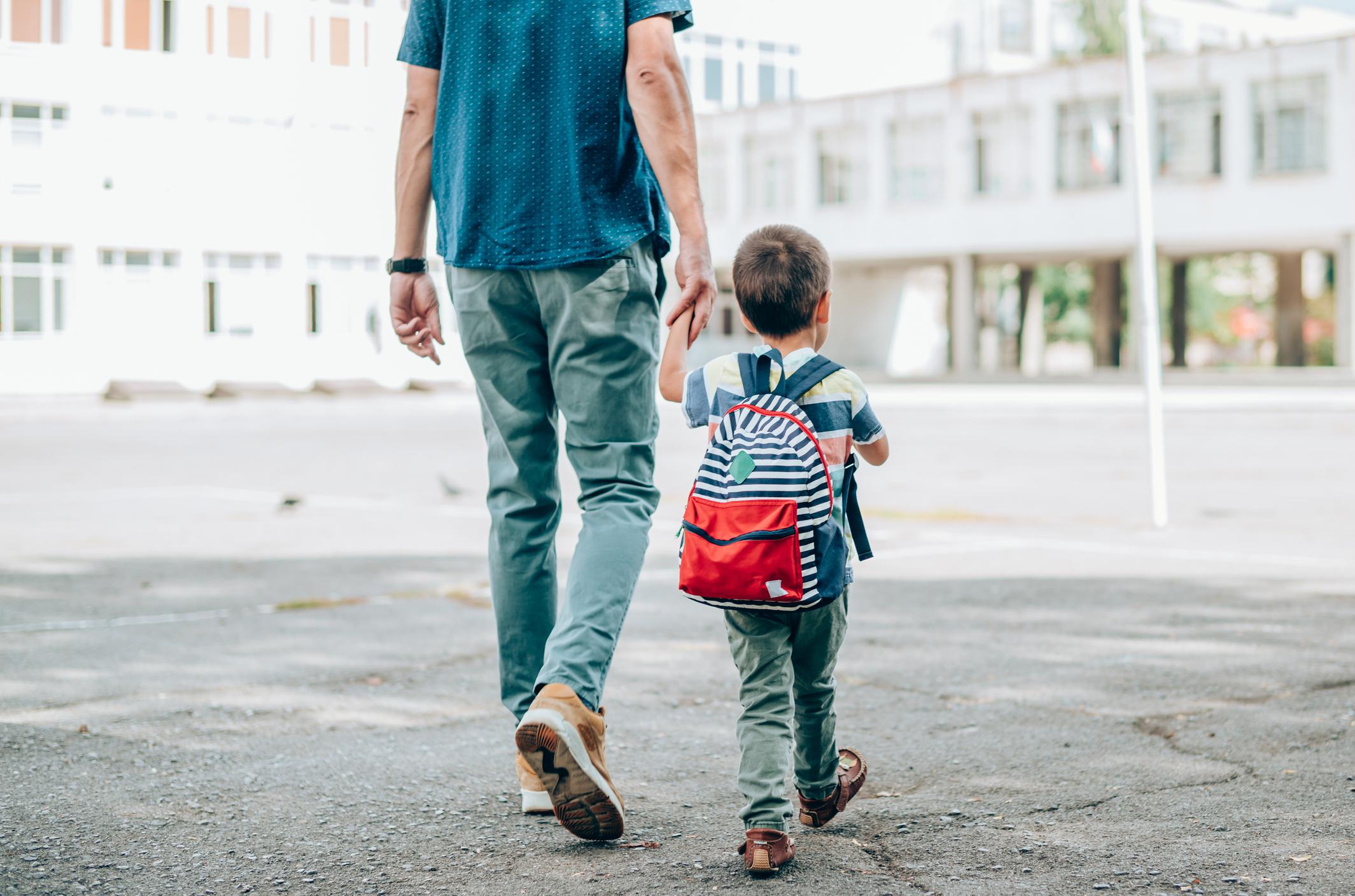How to prep your kids for safe school bus rides this year

Canva
Bus rides can be overwhelming for some kiddos, and especially for those with sensory challenges. An expert shares tips to try.
Table of Contents
When my kids first started school, I was equally excited and anxious about the prospect of them riding the bus. A safe way for them to travel to school and back every day? Amazing. A 40-minute ride where they’d be only mildly supervised? Eek. Buses are an integral part of our school system—and they’re the safest road vehicle to travel in—but they’re also sometimes lacking when it comes to supervision. One psychologist dad says riding the school bus falls under “the corners” of kids’ experiences, similar to sleepovers—there’s a bit more leeway for risky decisions. There’s sometimes a bus aide or monitor who can help with passenger management, but sometimes not (though you may be able to request one from your school if you feel it’s necessary!).
We talk a lot about getting ready for the classroom when going back to school, but riding the bus is a big step, too. For tiny kindergartners, or those starting a new school, the entire process is brand new. So when it was time for my kindergartners to each board the bus, we had a few conversations leading up to the big day about what was expected of them, what to look out for, and how they could stay calm and safe on the ride to and from school.
Julia DeNey, a former para-educator and the founder behind Sense-Ational You, a clothing line designed for those with sensory processing disorder or autism, understands this fully. Bus rides can be overwhelming for some kiddos, and especially for those with sensory challenges. Here are her best tips for helping your child stay safe and regulated while riding the school bus.
How to prepare your child for the school bus ride
Take a practice run
Consider driving the bus route yourself to familiarize your child with the experience, DeNey says. “This can help reduce anxiety by making the routine more predictable,” she notes. They’ll start to recognize familiar landmarks and see similar sights on the way to and from school, which can help keep kids at ease.
Talk to them about seat choices
Sitting near the front of the bus can reduce motion sickness and sensory overload. It also allows the child to be closer to the bus driver, which provides an added sense of security.
Create a social story
“Use social stories to help children understand what to expect and how to behave on the bus,” DeNey suggests. These narratives you create can provide a clear, step-by-step outline of the bus ride, making it less intimidating. You might also try role-playing different scenarios that might occur on the bus, which can help your kiddo practice handling various situations, such as finding a seat or asking the bus driver or monitor for help, she says.
Provide comfort items
Allowing your child to bring a small comfort item or sensory tool, like a fidget toy or favorite small stuffy from home can help them stay calm. “These items can provide a sense of security and a way to manage sensory input when things get intense,” DeNey notes. Just be sure they keep it safely stored in their backpack during the school day.
Consider noise reduction headphones
If your kiddo is sensitive to noise, noise-canceling headphones or earplugs are beneficial, DeNey says. “These tools will help them manage the auditory overload that comes with bus rides.”
Establish a routine
A consistent morning routine will help your child feel prepared, regulated and less anxious. That’s because knowing what to expect each day will make the transition to the bus ride smoother, DeNey says. “Use positive reinforcement and rewards for successful bus rides to motivate your child to follow bus rules and manage their behavior.”
Also, don’t hesitate to introduce your child to the bus driver and discuss any specific needs or concerns, DeNey points out. “A supportive and understanding driver significantly impacts your child’s comfort level.”
Know the bus rules
Reinforce the importance of following bus rules for safety, such as staying seated and keeping the aisles clear. Clear and consistent rules can help your child know what is expected of them.
Create an emergency plan
Develop and practice an emergency plan with your child in case they feel overwhelmed or scared on the bus. “Knowing there is a plan in place will provide them with a sense of control,” DeNey says. You might want to communicate this plan to your child’s bus driver, as well.
Use the buddy system
Try pairing your child with a friend or older student who can offer support and help them feel secure, especially on their first rides. “A buddy will provide companionship and assistance during the bus ride and on difficult days,” DeNey says. If there’s a bus monitor on your kiddo’s bus, they might be able to help with this, too.
With the proper preparation and planning, all kids can have a safe and positive experience riding the school bus, DeNey says. “As parents, it’s essential to remain patient and supportive as your child adjusts to the new school year and bus routine.” And don’t forget to reach out to your child’s bus driver, teacher or school administrator if you’re looking for more information or support. Safe travels!


































